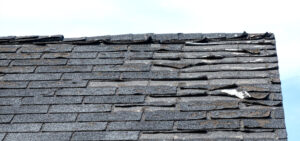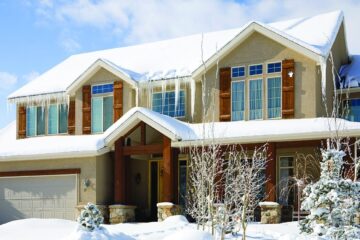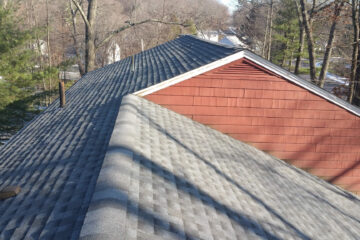 Imagine you’re on the verge of finding the perfect house for your family and you’ve come across an almost perfect house in San Antonio, Texas. You’ll enjoy the spacious master suite, the backyard, and the kitchen, which is designed for entertaining. The roof is the only problem. Despite its age and curled and cracked shingles, it’s not falling apart.
Imagine you’re on the verge of finding the perfect house for your family and you’ve come across an almost perfect house in San Antonio, Texas. You’ll enjoy the spacious master suite, the backyard, and the kitchen, which is designed for entertaining. The roof is the only problem. Despite its age and curled and cracked shingles, it’s not falling apart.
You may be able to see some discoloration around the house, but you haven’t noticed any leaks when you walk around the house, so how serious is this problem?
Those of you who have read our previous posts know that a roof that is a few decades old and faulty should not be taken lightly. As a result, you may have to deal with a number of problems in your home, including leaks, mold, drafts, and structural damage to your home. It is important to note, however, that a bad roof could become a problem for you even before you begin living in the house. When it comes to homeowner’s insurance, the company looks at every aspect of the house, including the roof. Having a roof that is in bad shape may have a negative impact on your premiums, or it may even affect your chances of being able to get homeowner’s insurance in the first place, if the roof is in bad shape.
It is a liability to have an old roof
When teenagers apply for car insurance, they are usually charged higher premiums than experienced drivers because they are more likely to get into an accident than more experienced drivers because they are less experienced drivers. Homeowners with old roofs may be charged a higher premium for homeowner’s insurance when they apply for a policy, since older roofs are more likely to suffer damage than those with brand new roofs. The reason for this is the fact that older roofs are more likely to sustain damage. It is important to remember that even roofs made with the highest quality materials are subjected to the elements at all times, and their lifespan is limited. As long as a roof is maintained properly, it can last up to 30 years. Consequently, if the roof of a home is about 15 years old or older, then the homeowner is likely to be required to pay a hefty premium for homeowner’s insurance if the roof is more than 15 years old.
It is very likely that the insurer will require a roof inspection if the roof is over 20 years old. In order to determine the liability of the roof, an expert roofing contractor will need to inspect the roof and make an assessment. An insurance company will require a roof replacement if a roof fails the roof inspection or they will deny homeowner’s insurance coverage if the roof fails the roof inspection.
It Applies to Renewals, Too
Your homeowner’s insurance will continue to be affected by roof problems for quite some time after you have been approved for homeowner’s insurance for the first time. In spite of the fact that your roof was only 5 years old when you bought the house, your insurer will reassess your coverage when it comes time to renew your homeowner’s insurance policy. It is quite likely that your premiums will increase if your roof is in bad shape. It’s almost certain that after 20 years, the roof will have sustained some kind of damage of some kind. According to the roofing contractor, the insurers will require an inspection at that point, and if the roof cannot be repaired, a roof replacement will be required. A roof replacement can be paid for in part by some insurers, but not in its entirety by others. Insurance companies will usually pay what the roof is worth at its current age rather than the value of a new roof based on its current age.
What’s Covered?
It is also important to note that the age of the roof can also affect how much the insurance company will cover if the roof is damaged in a storm. The likelihood is that insurers will pay for the damage to the roof in full if the roof was new and in good condition before the storm. In the case of an older roof that is in bad shape, the chances of reimbursement start to reduce. While some insurers will reimburse you for the amount they think the roof is worth based on its age and condition prior to the storm, there are others who will not reimburse you at all.
Insurers also have a hard time insuring leaky roofs. A homeowner is accountable for keeping up-to-date with the maintenance of his or her home as well as preventing leaks from occurring in the house. The insurance companies may not be sympathetic if the home is known to have leaks on the roof, which may lead to damage to the home as a result of those leaks.
A Bad Record
There is no difference between homeowner’s insurance and any other form of insurance in that when you apply for homeowner’s insurance, the insurers will consider both your history as well as the history of the home. In the event that you have a history of frequent insurance claims, a new insurer may expect the same from you and charge a higher premium as a result. It would be much better for you, however, if your history of homeowner’s insurance has been reasonably uneventful. It is important that your insurance company knows that you are a person who takes care of your home and does not often need to use the coverage that you have. An insurer will prefer to deal with a policyholder who applies for insurance to cover emergencies that they do not expect to occur in the future.
When you move into a new home, it’s important to feel confident in its roof and to maintain it well. You should also know the secrets to your homeowner’s insurance in order to protect your home. All Star San Antonio Roofing can assist you if you need some extra assistance dealing with the insurance company. As strong as our reputation with homeowners is with insurers. Our team can assist you with adjusting your homeowner’s insurance to maximize your coverage and keep your premiums low.

